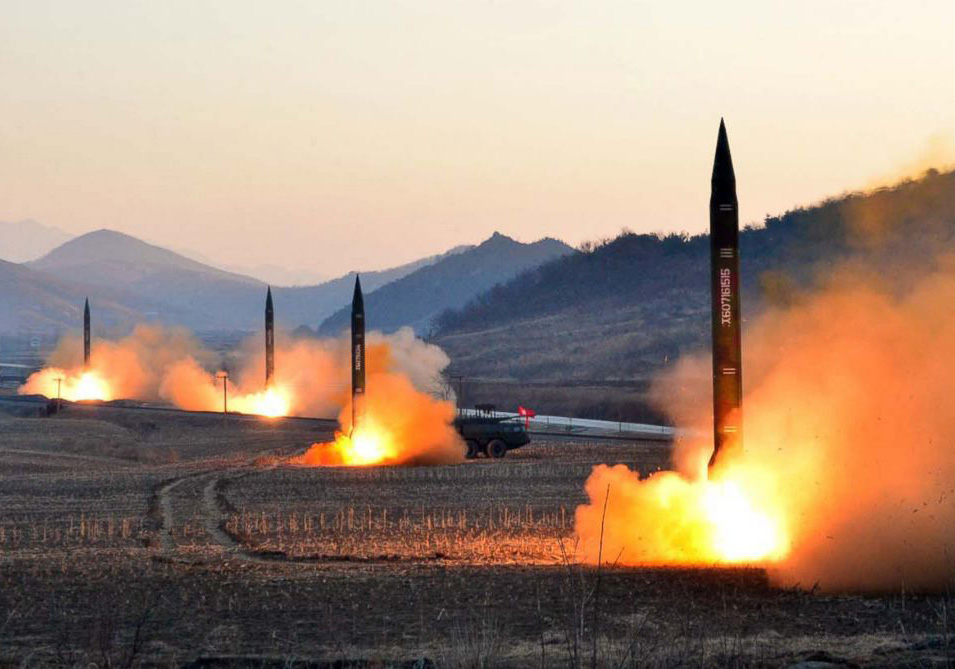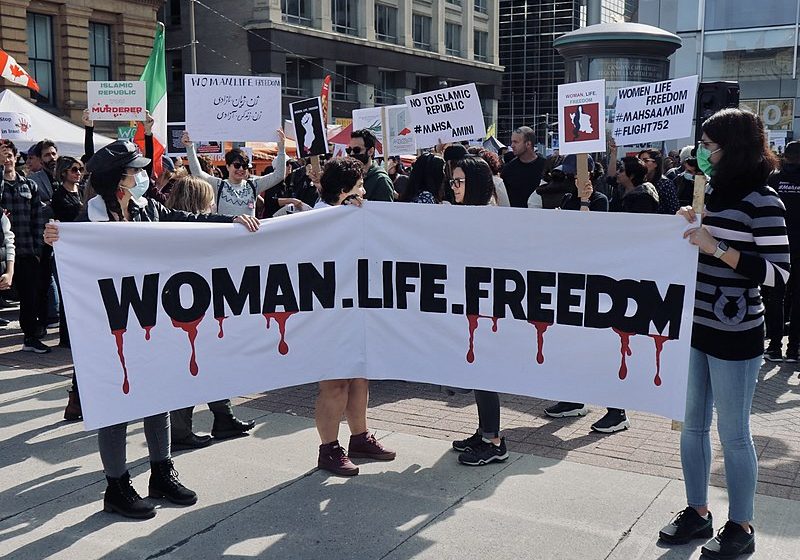Australia/Israel Review
Nuclear Lessons
May 3, 2017 | Emily Landau

Emily B. Landau
The Trump Administration is currently reviewing the North Korean nuclear situation, with the aim of generating a fresh approach to stop this determined proliferator. On his trip in mid March to Asia (Japan, South Korea and China), US Secretary of State Tillerson noted that twenty years of diplomatic efforts to dismantle North Korea’s nuclear capability have failed, and he seeks input from the regional states on how to carve out a more effective policy. One day into his trip, Tillerson assured North Korea that it “need not fear” the United States or regional neighbours, who only want to live in peace with North Korea. He then called on it to abandon its nuclear and missile programs. The next day, in Seoul, Tillerson said that if North Korea continues to escalate the nuclear threat, the US might have to take pre-emptive action. After meeting with Chinese Foreign Minister Wang, however, Tillerson expressed willingness to work with China to have North Korea reverse course.
How could the situation in North Korea change, after years of failed negotiations and parallel North Korean nuclear and missile advances? Most advice offered by pundits merely repackages old ideas that have not succeeded in producing a lasting agreement on dismantling North Korea’s nuclear program over the past twenty-five years. Some suggest that Tillerson should demonstrate determination, while keeping the door to diplomacy slightly open, if Kim Jong-Un indicates a willingness to resume negotiations; if the North Korean leader remains defiant, the US should adopt more economic sanctions.
Others suggest trying to negotiate a freeze on North Korea’s programs and activities in return for lifting of sanctions and perhaps an offer to sign a peace agreement with North Korea. The feasibility of such a deal at this late stage is highly dubious, and in any case would leave North Korea as a nuclear state.
Tillerson’s efforts to carve out a new approach come against the backdrop of growing tensions in the region. On March 6, 2017, North Korea fired four missiles simultaneously toward Japan, stating that it was practising hitting US military bases in Japan. The North Korean missiles have been tested before, leading analysts to conclude that North Korea was focused on testing its ability to set up and rapidly deploy a salvo of missiles in a war scenario. The launch also coincided with joint US-South Korean military exercises that take place every year, which North Korea views as preparation for war against it. In this tense atmosphere, US allies Japan and South Korea are looking for a firm American commitment to respond with full force to any North Korean attack.
For its part, China is wary of US moves in the region – especially the stationing of the THAAD anti-missile system in South Korea – for fear they will alter the existing regional balance of power, as part of a US strategy to contain China. Within this complex regional matrix, Tillerson is seeking the support of Japan, South Korea and China in confronting North Korea’s nuclear threat.
The prospects for successful negotiations are slim, especially considering the history of repeated failures since the early 1990s. North Korea joined the NPT in December 1985, but only concluded a safeguards agreement with the IAEA after US nuclear weapons were removed from South Korea in 1991. North Korea submitted its first report to the IAEA in May 1992, and the Agency found discrepancies in its details, leading to a request to inspect facilities. The next two years saw repeated requests from the IAEA for clarification, North Korean threats to leave the NPT, and finally inspections that led to the conclusion that North Korea had separated more plutonium from spent fuel at its reactor at Yongbyon than it declared in its report. North Korea’s June 1994 announcement of its withdrawal from the NPT sparked US efforts to negotiate a deal.
The “Agreed Framework” of October 1994 averted the immediate crisis and was intended to result in the freeze and dismantling of North Korea’s nuclear facilities. But in 2002 it became apparent that North Korea was working on a uranium enrichment program for nuclear weapons, creating a new nuclear crisis. From 2003-2008, five regional powers (US, Russia, China, South Korea, and Japan) failed to negotiate a nuclear dismantlement deal with North Korea, in the framework of the Six-Party Talks.
Over the eight years following the collapse of these talks, the Obama Administration followed a policy of “strategic patience” on North Korea, essentially waiting for North Korea to indicate its intent to negotiate seriously on the nuclear issue. But rather than coming back to the table, North Korea instead used these years to make significant advances in both its nuclear and missile programs, including four additional nuclear tests, and advances in the realm of ICBM technology and miniaturisation of a nuclear warhead to fit atop a missile. Today North Korea is a nuclear state, on the verge of being able to threaten the United States with a nuclear-tipped ICBM.
Upon leaving office and after refraining from adopting a proactive policy to curb North Korea’s nuclear ambitions, Obama informed Trump that the North Korean nuclear and missile threat might be the number one security challenge that Trump will have to confront. In a New York Times article, David Sanger and William Broad disclose a secret cyber-war effort against North Korea’s missiles that was initiated by the Obama Administration in 2014. Though interesting in and of itself as an effort to render ineffective a central component of North Korea’s nuclear capability – namely, the delivery system – the piece raises more questions than it answers regarding the reliability of this missile-focused initiative. Moreover, once revealed, Trump is no longer inheriting a secret effort, and the exposure could spell its demise.
A further concern regarding North Korea is its role in helping other prospective proliferators, like Iran. Jay Solomon of the Wall Street Journal drew attention to a UN report which notes that North Korea has been trying to sell Lithium-6 – a key material for developing miniaturised nuclear weapons – to unidentified buyers. Speculation turns to Iran as a key prospective buyer.
There are currently no good options for getting North Korea to reverse course in the nuclear realm, either through diplomacy or a more forceful approach, which raises fears of escalation to nuclear war. This is the result of years of failed negotiations followed by eight years of strategic patience – providing North Korea with the necessary time to advance its programs and perfect its capabilities.
While the rollback of North Korea’s nuclear capabilities thus remains an elusive goal, there is a lesson to be learned for dealing with Iran. The Obama Administration hailed the nuclear deal known as the Joint Comprehensive Plan of Action (JCPOA) as a nonproliferation success story, but the deal suffers from many critical weaknesses. Chief among them is the expiration date in nine to 14 years when, with sanctions lifted, Iran will be stronger than it was before the negotiations began in 2013, and will have a much more advanced nuclear infrastructure. Iran, virtually unhindered, is also rapidly developing its own ballistic missile program.
The lesson should be clear: the short and long term regarding the JCPOA are not two distinct time periods. Rather, they are linked in the sense that there is no short-term benefit to the JCPOA if these initial years are not used effectively to confront Iran for the sake of the long term. Iran has not demonstrated a strategic U-turn in the nuclear realm, and remains a determined proliferator.
Putting pressure on Iran is a proven path to altering its behaviour in the nuclear realm – it is the toughness of the biting sanctions from 2012 that brought Iran to the table in 2013. Replacing the pressure tactic with hopes of change in Iran – especially when pinned on the strengthening of Rouhani – is misguided: the Iranian President has not demonstrated significant moderation either internally or as far as its regional behaviour.
Moreover, after securing the JCPOA, President Obama, in the 18 months remaining of his tenure, did little in response to repeated Iranian provocations and aggression. Rather than engendering moderation, this policy only served to embolden the regime. If the P5+1 continue to celebrate the JCPOA-induced delay while relaxing their vigilance and pressure, they will ultimately face a nuclear threat as intractable as North Korea.
Dr. Emily Landau is a senior research fellow and Head of the Arms Control and Regional Security Program at the Institute for National Security Studies (INSS) in Tel Aviv. © INSS, reprinted by permission, all rights reserved.
Tags: Asia, Iran, North Korea






